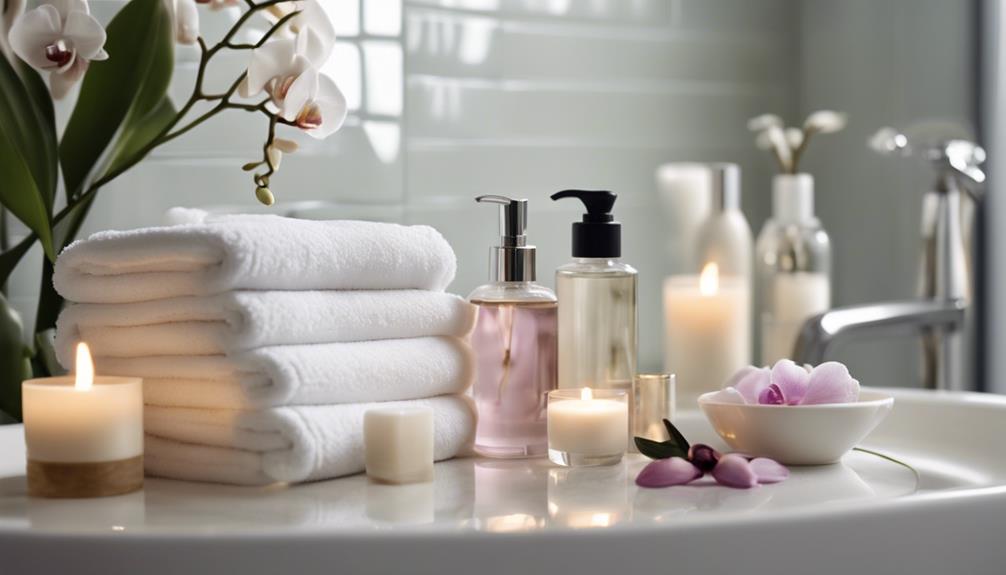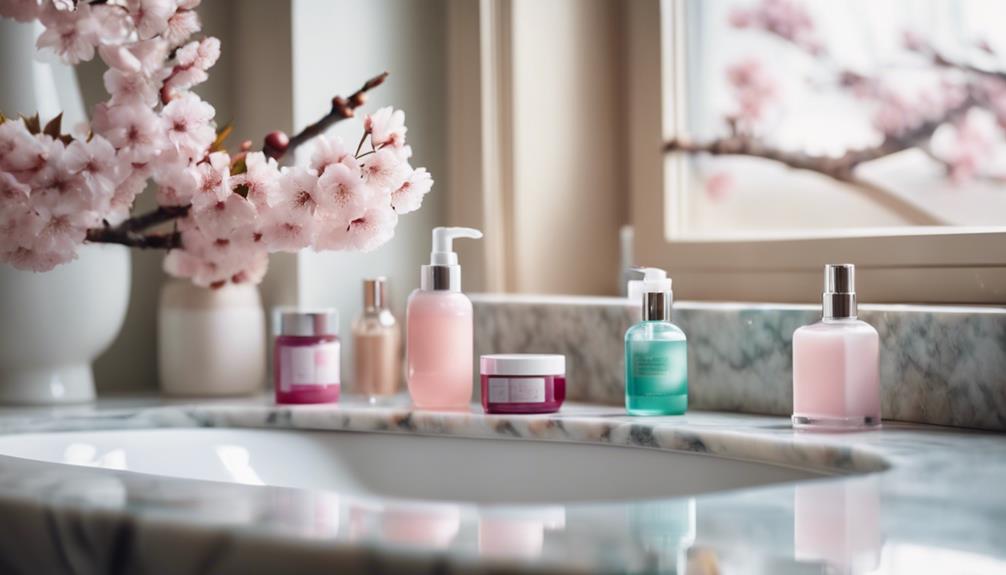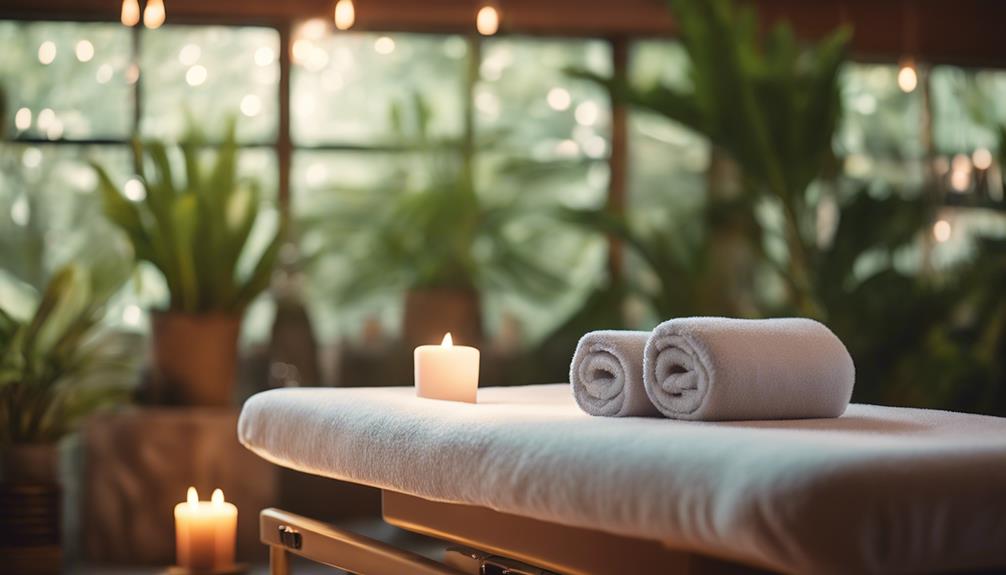To address the signs of aging, begin with a basic morning and evening skincare regimen. Gently cleanse your face, then apply a hydrating toner and a moisturizer rich in antioxidants. Remember to use sunscreen to shield your skin from UV rays. At night, cleanse your face twice to remove makeup, then incorporate retinol to boost collagen production. Utilize key ingredients such as hyaluronic acid for hydration, peptides for increased firmness, and Vitamin C for protection against sun damage. Select products according to your skin type and make adjustments as needed. There is a lot more to discover about specific routines and ingredients tailored to your age and concerns.
Key Takeaways
- Start your morning routine with a gentle cleanser, hydrating mist, antioxidant moisturizer, revitalizing serum, and finish with sunscreen for UV protection.
- In the evening, thoroughly remove makeup, cleanse again, apply retinol for collagen stimulation, and use a rich night cream for overnight recovery.
- Incorporate key anti-aging ingredients like hyaluronic acid, peptides, and vitamin C for hydration, firmness, and sun protection.
- Tailor your products based on your skin type, choosing lightweight options for oily skin and rich formulations for dry skin.
Understanding Aging and Its Signs
Aging starts around age 30, and you might notice your skin showing signs like dryness, fine lines, and dark spots as cell renewal slows down. This decline in cell turnover means your skin isn't able to shed dead cells and regenerate fresh ones as efficiently. As a result, you could see an increase in visible fine lines and wrinkles, making your skin appear less youthful.
The aging process is influenced by several factors, including decreased collagen and elastin production, which contribute to loss of firmness and reduced elasticity. Environmental elements like UV exposure can accelerate these changes, leading to further skin damage. While aging is a natural occurrence, recognizing its signs early allows you to take action.
Understanding these signs is essential for developing an effective skincare routine. By being proactive, you can implement preventive measures that address dryness and improve skin texture.
This approach not only helps in maintaining a more youthful appearance but also promotes overall skin health. So, pay attention to your skin's needs, and start incorporating targeted products to combat the effects of aging today.
Recommended Skincare Routine
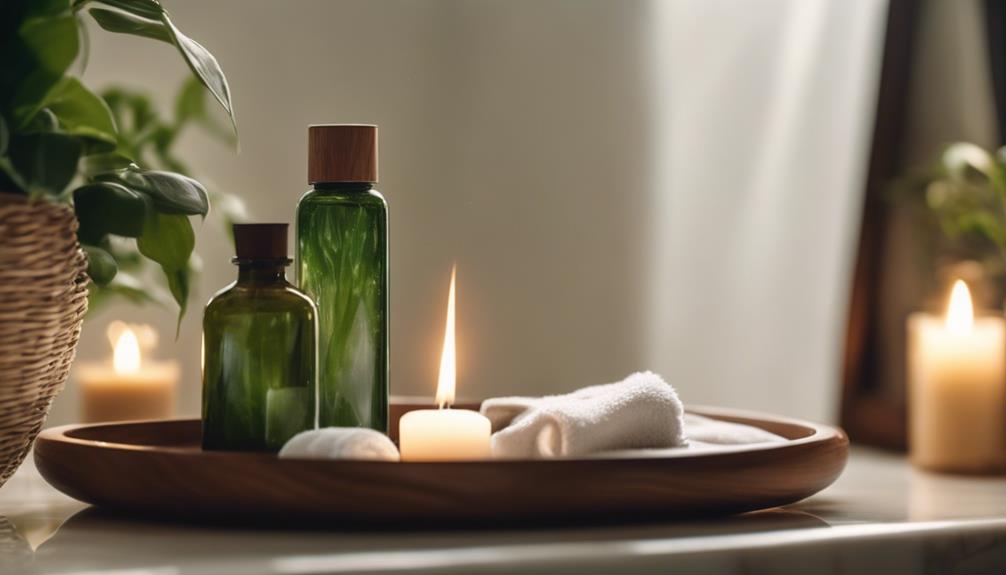
To maintain youthful skin, it's crucial to establish a thorough skincare routine that targets the effects of aging. A well-structured regimen can greatly improve your skin's texture and appearance, especially when you use the right anti-aging products with effective active ingredients. Here's a recommended routine to get you started:
Morning Routine:
- Start with a gentle, sulfate-free cleanser to remove impurities.
- Follow with a hydrating mist to tone your skin.
- Apply an antioxidant-rich moisturizer to nourish your skin.
- Use a revitalizing serum to boost hydration and radiance.
Evening Routine:
- Remove makeup thoroughly to prepare your skin for treatment.
- Cleanse your face again to make sure it's free of dirt.
- Apply targeted treatments like retinol to stimulate collagen production.
Essential Ingredients for Anti-Aging
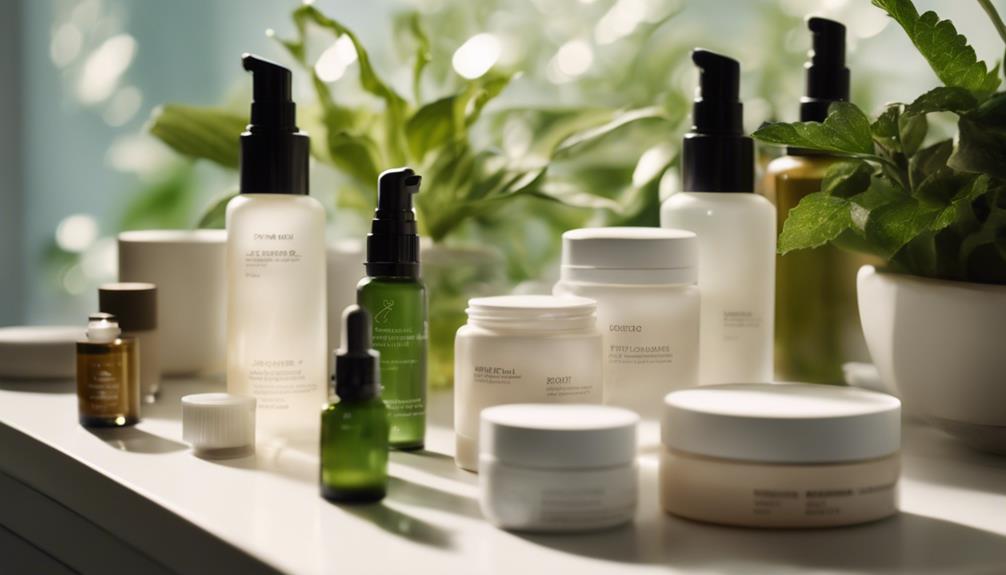
When it comes to anti-aging, knowing the key ingredients can make all the difference in your skincare routine.
You'll want to focus on active ingredients like hyaluronic acid, retinol, and vitamin C, as they offer powerful benefits for your skin.
Understanding their importance will help you choose products that effectively combat signs of aging.
Key Anti-Aging Ingredients
In your quest for youthful skin, incorporating key anti-aging ingredients can make all the difference in maintaining a radiant complexion. Here are three vital ingredients you should include in your skincare routine:
- Hyaluronic Acid: This powerhouse ingredient attracts and retains moisture, plumping your skin and keeping it hydrated. It's important for combating dryness and fine lines.
- Peptides: These amino acid chains work wonders for improving skin elasticity and firmness. By stimulating collagen production, peptides help your skin look tighter and more youthful.
- Vitamin C: As a powerful antioxidant, vitamin C protects your skin from sun damage and free radicals. It also promotes a brighter, more even skin tone, making it an indispensable part of your anti-aging arsenal.
Importance of Active Ingredients
Active ingredients are the building blocks of an effective anti-aging skincare routine, making it imperative to understand their roles in achieving youthful, radiant skin.
Hyaluronic acid is a must-have for your regimen, as it provides intense hydration by attracting and retaining moisture. This hydration is essential for plump, youthful skin that feels soft and looks vibrant.
Retinol, a derivative of vitamin A, is another powerhouse ingredient you shouldn't overlook. It stimulates collagen production and accelerates cell turnover, effectively reducing fine lines and wrinkles. Using retinol consistently can lead to significant improvements in your skin's texture and appearance.
Don't forget about peptides, either. These tiny proteins enhance skin firmness and elasticity by stimulating collagen synthesis, which is crucial for maintaining a youthful look. Incorporating them into your routine helps your skin feel firmer and more resilient.
Together, these active ingredients—hyaluronic acid, retinol, and peptides—work synergistically to combat signs of aging. By choosing products rich in these essential components, you can effectively support your skin's health and achieve a more youthful complexion.
Customizing Your Skincare Products
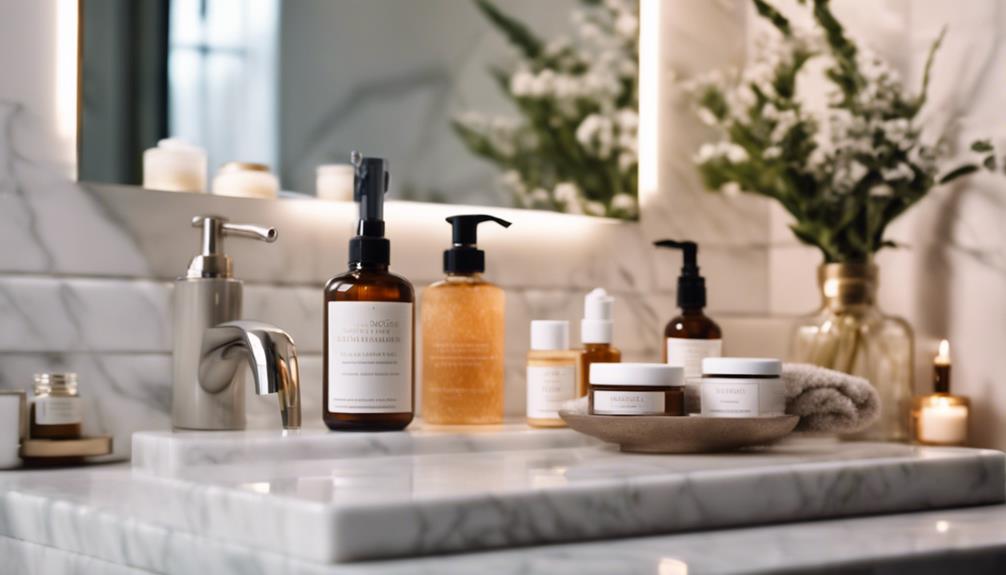
To truly customize your anti-aging skincare routine, you need to assess your unique skin type and concerns.
By identifying issues like dryness or fine lines, you can choose products that directly address your needs.
Tailoring your regimen guarantees that you get the most effective results from your skincare efforts.
Assess Your Skin Type
Knowing your skin type is essential for choosing the right anti-aging products that truly meet your needs. By understanding your unique skin characteristics, you can effectively customize a skincare regimen that enhances product efficacy and addresses specific aging signs.
Here are three common skin types and how to approach them:
- Oily Skin: If your skin tends to shine or feels greasy, opt for lightweight, oil-free anti-aging products. These won't clog your pores and can help control excess oil.
- Dry Skin: For those with dry skin, focus on rich, hydrating formulations. Look for ingredients like hyaluronic acid and glycerin to combat moisture loss and keep your skin plump.
- Combination Skin: If your skin is a mix of both oily and dry, you'll need a balanced approach. Use lighter gels on your T-zone and heavier creams on drier patches to guarantee all areas receive the care they need.
Tailored Product Recommendations
After examining your skin type, it's time to select tailored products that effectively address your specific concerns and enhance your anti-aging routine.
Begin by evaluating your individual skin concerns—whether it's dryness, fine lines, or uneven tone. This assessment allows you to make informed decisions about the anti-aging ingredients that will work best for you.
In your 30s, consider incorporating retinol to combat collagen loss and promote cell turnover. If you're in your 50s, focus on hydrating ingredients like hyaluronic acid and peptides to restore moisture and elasticity. Utilizing a skin quiz can help you pinpoint the most suitable products, ensuring a tailored approach to your regimen.
Don't overlook organic pro-aging skincare options, which often use natural ingredients and can be gentler on sensitive skin types.
Regularly update your skincare routine to adapt to changes in your skin's condition, environment, and lifestyle. By staying proactive and attentive, you'll maintain ideal results and meet your evolving skin concerns.
Tailored product recommendations are key to creating a personalized, effective anti-aging skincare routine that truly works for you.
Differences in Men's and Women's Skincare
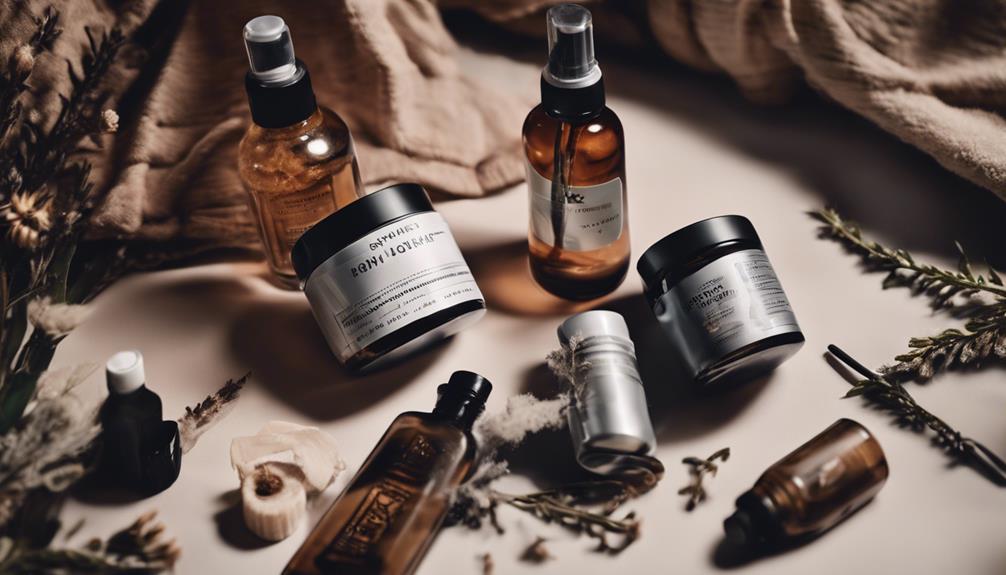
Men's and women's skincare routines differ considerably due to the unique characteristics of their skin, influencing how each gender ages and requires care. Understanding these differences can help you choose the right products for your skincare routine.
- Skin Thickness: Men's skin is about 25% thicker than women's, which contributes to a firmer appearance for a longer time as they age. This thickness can also affect how products absorb.
- Collagen Production: The collagen structure in men's skin is tightly packed, reducing the visibility of fine lines. This means that men may not need anti-aging serums as frequently, compared to women, who experience more pronounced signs of aging earlier.
- Oil Production: Men have more sebaceous glands, leading to increased oil production. This can result in a greater tendency for acne, especially during younger years, making targeted skincare essential.
Age-Specific Skincare Routines
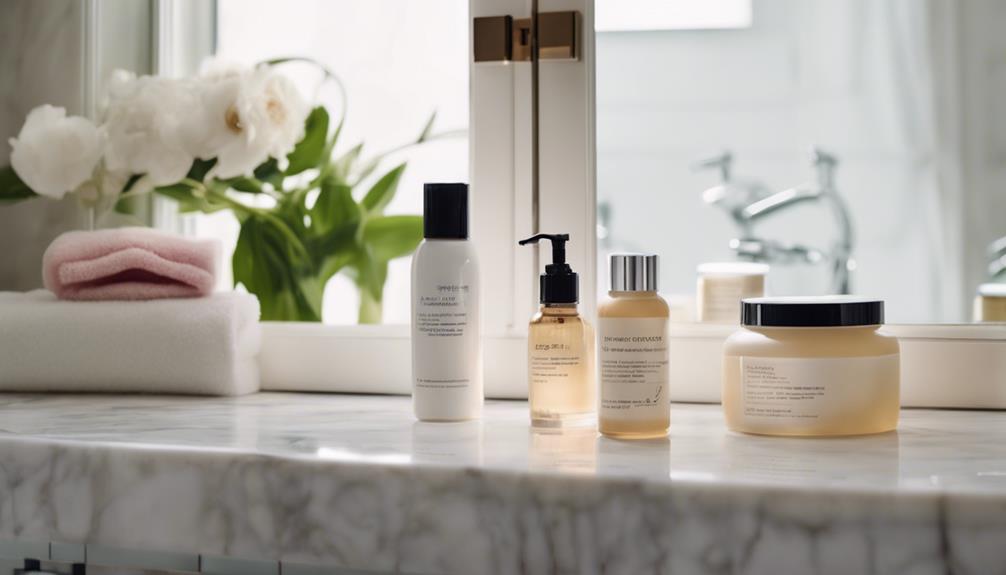
Understanding the differences in skincare needs between genders sets the stage for age-specific routines that address the unique challenges your skin faces at various life stages.
In your 20s, focus on maintaining hydration and sun protection with a daily SPF of 30+. This early prevention is essential for long-term skin health.
As you enter your 30s, it's time to enhance your anti-aging routine by incorporating retinol and alpha hydroxy acids (AHAs). These ingredients help combat the 1-2% annual loss of collagen and elastin, promoting cell turnover for a more radiant complexion.
In your 40s, prioritize antioxidant-rich products like Vitamin C and niacinamide. These ingredients work to address sun damage and hyperpigmentation while making sure you continue regular sunscreen application.
When you reach your 50s and 60s, shift your focus to peptide creams and hyaluronic acid-rich moisturizers. These products combat hormonal changes that lead to significant collagen loss and skin dryness.
Tailor your anti-aging routine at each age to include gentle exfoliation, targeted serums, and consistent hydration to effectively address evolving skin concerns. This approach makes certain your skin remains healthy and vibrant throughout the years.
Customer Engagement and Satisfaction
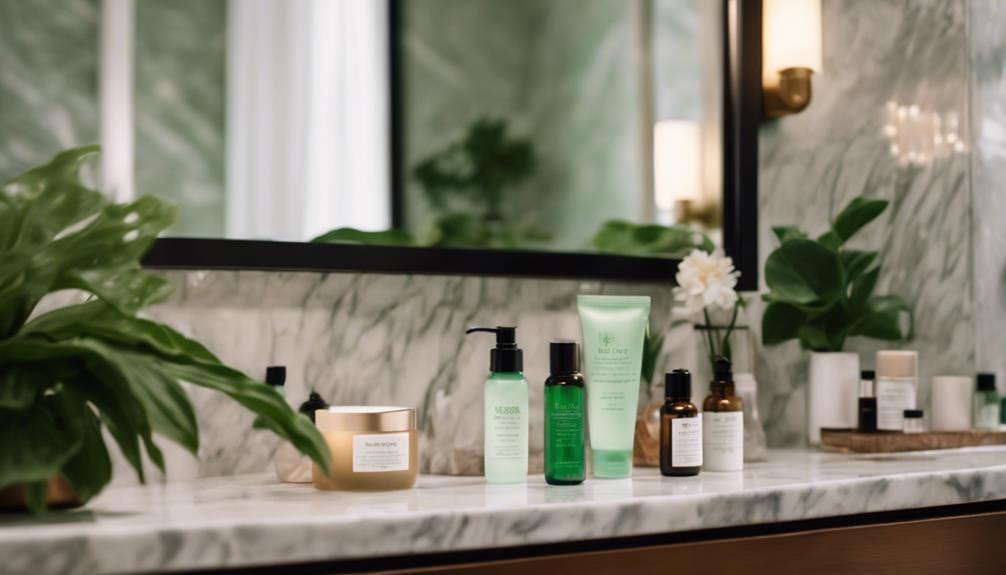
Customer engagement and satisfaction are key to building lasting relationships with your brand, and several initiatives help foster this connection. By focusing on your experience, the brand enhances both client satisfaction and the overall appeal of its skincare products. Here are a few ways they do this:
- Discounts for Subscribers: You get a 15% discount on your next order just for signing up for the newsletter, encouraging ongoing customer engagement.
- Free Samples: With every purchase, you receive free samples, allowing you to try new skincare products without commitment. This builds trust and satisfaction with your choices.
- Reward System: By leaving product reviews, you earn rewards, which not only provides feedback for the brand but also creates a sense of community and involvement.
With a client satisfaction rating of 4.8 out of 5 from 356 reviews, it's clear that these initiatives resonate with customers.
Engaging with your brand through these avenues makes the shopping experience enjoyable and builds loyalty, ultimately leading to better skin and a happier you.
Can I Use the Summer Skincare Routine to Combat Signs of Aging as Well?
Yes, you can definitely use a summer skincare protection routine to combat signs of aging. By using SPF moisturizers, antioxidants, and hydrating serums, you can protect your skin from the sun’s damaging rays and prevent premature aging. Stick to a consistent routine to see long-term results.
Conclusion
By embracing the right anti-aging skincare routine, you're not just fighting signs of aging; you're investing in yourself.
Coincidentally, as you nourish your skin, you may find your confidence blooming alongside it.
Remember, the journey to youthful skin isn't just about products; it's about understanding what works for you.
So, whether you're customizing your regimen or exploring age-specific tips, your skin deserves this care—and you'll be amazed at how much better you feel, too.
